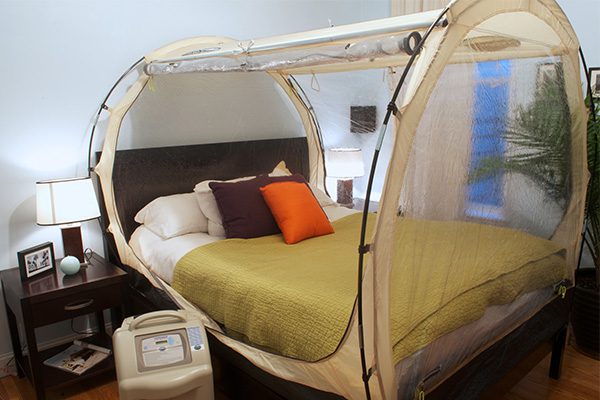Should you sleep in an altitude tent to PB in 2018?
Two U Sports All Canadians weigh in on the benefits of hypoxic chambers

“Live high, train low,” is a heavily-used phrase in the world of endurance sports.
The phrase refers to the benefit of spending idle time in hypoxic (lack of oxygen) areas of high altitude, before coming down to sea level to train and race. Exercise physiologist Greg McMillan explains that when living in a hypoxic environment, the kidneys react to send erythropoietin (EPO) to the bone marrow, which produces new red blood cells to carry more oxygen. The more oxygen that gets carried in an athlete’s bloodstream, the more accessible it is to skeletal muscle, and the better those muscles can function in aerobic activity.
When athletes come down from altitude to train and race, they benefit from breathing air more dense in oxygen than to that they have grown accustomed. Consequently, places like Boulder, Colo. and Flagstaff, Ariz. have become highly-popular endurance training hubs, due to their training facilities situated up to 2,100m above sea level.
RELATED: Finding the altitude training sweet spot.
There are ways of simulating hypoxic conditions that have nothing to do with setting up camp atop a mountain, and they are gaining in popularity within elite and recreational running communities. Hypoxic chambers, or altitude tents, are designed to contain air reduced in oxygen so that athletes can create the performance-enhancing hematological (blood) adaptations without living at altitude. Athletes using this technology typically sleep in the chamber to obtain prolonged exposure to hypoxic conditions, and train at sea level during the day in order to maximize high-intensity training.
According to renowned American running coach, Dr. Joe Vigil, 95 per cent of all Olympic and world championship medals from the 800 through the marathon since 1968 were won by athletes who lived or trained at altitude. Nowadays, high-profile athletes, such as Michael Phelps, three-time Ironman world champion Craig Alexander, and mountain and ultrarunner Kilian Jornet have all admitted to using hypoxic chambers.

Two U Sports cross-country All-Canadians, Shawn Master of the University of Windsor and Jack Sheffar of Western University, have incorporated the alternative training method into their lifestyles. Master, who improved to 11th at the 2017 U Sports Cross-Country Championships from 58th in 2016, finds a difference in his overall energy levels. “I have been able to recover faster between endurance-type cross-country workouts,” says Master, whose altitude chamber allows him to manipulate levels of hypoxia. “I started out at Calgary-levels of altitude (3,400 feet) and then reduced oxygen availability to simulate Colorado-
level altitude (6,000 feet). I gradually increased the simulation as the cross-country season moved forward.” (By comparison, Iten, Kenya, where many of the world’s top runners train, is located at 2,400m, or 7,800 feet.)
Sheffar hopes to see the same gains as Master. After being disappointed with recent performances, he decided to experiment with a hypoxic tent. “(My coach) Guy (Schultz) did a lot of research on its advantages, and I’ve done some reading on altitude training. I was looking for any marginal gain I could get to help me get back to my old form.” Sheffar admits that Western have been using the chamber for quite some time. “The team bought the chamber a few years ago, and I was fortunate to get it handed down to me.”

Most research on altitude training indicates that it takes 21 to 28 days for the body to make lasting – but not permanent – adaptations. Studies also show that the magnitude and quickness of adaptation varies between individuals. Hypoxico and Altitude Tech are two of the more popular chamber vendors.


